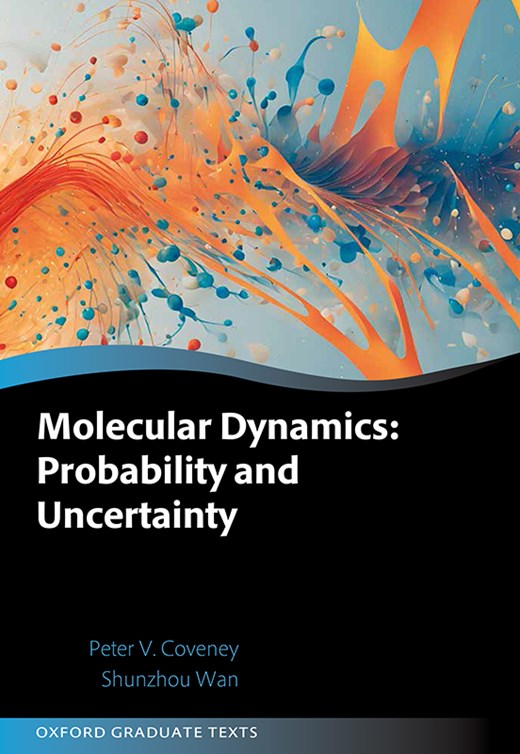 Molecular Dynamics: Probability and Uncertainty
Molecular Dynamics: Probability and Uncertainty
Contents
-
-
-
-
-
-
-
-
-
6.1 Artificial intelligence and machine learning 6.1 Artificial intelligence and machine learning
-
6.2 Parametric and non-parametric methods 6.2 Parametric and non-parametric methods
-
6.2.1 Neural network methods 6.2.1 Neural network methods
-
6.2.2 Kernel methods 6.2.2 Kernel methods
-
-
6.3 AlphaFold 6.3 AlphaFold
-
6.3.1 Challenges in predicting protein structures 6.3.1 Challenges in predicting protein structures
-
6.3.2 Evaluation of predicted structure 6.3.2 Evaluation of predicted structure
-
6.3.3 Uncertainty quantification in AI-based structure predictions 6.3.3 Uncertainty quantification in AI-based structure predictions
-
6.3.4 Structure predictions for ligand-protein complexes 6.3.4 Structure predictions for ligand-protein complexes
-
6.3.5 Beyond single static structure predictions 6.3.5 Beyond single static structure predictions
-
-
6.4 Trustworthiness, transferability and explainability 6.4 Trustworthiness, transferability and explainability
-
6.5 Combining artificial intelligence with molecular dynamics 6.5 Combining artificial intelligence with molecular dynamics
-
6.6 Workflows combining artificial intelligence with molecular dynamics 6.6 Workflows combining artificial intelligence with molecular dynamics
-
6.7 Summary 6.7 Summary
-
-
-
-
6 Molecular Dynamics and Artificial Intelligence
Get access-
Published:April 2025
Cite
Abstract
This chapter looks into the intersection of molecular dynamics and artificial intelligence, critically evaluating the transformative potential of machine learning in this field. It begins with an overview of AI and machine learning, distinguishing between parametric and non-parametric methods, with a focus on neural network and kernel methods. The chapter examines the breakthrough of AlphaFold in protein structure prediction and discusses critical aspects such as trustworthiness, transferability and explainability of AI models. It then explores how AI can be combined with physics-based methods to enhance simulations and presents workflows that integrate these technologies. The chapter concludes with a summary of key insights and future directions in leveraging AI for molecular dynamics.
Sign in
Personal account
- Sign in with email/username & password
- Get email alerts
- Save searches
- Purchase content
- Activate your purchase/trial code
- Add your ORCID iD
Purchase
Our books are available by subscription or purchase to libraries and institutions.
Purchasing information| Month: | Total Views: |
|---|---|
| April 2025 | 7 |
| May 2025 | 2 |
Get help with access
Institutional access
Access to content on Oxford Academic is often provided through institutional subscriptions and purchases. If you are a member of an institution with an active account, you may be able to access content in one of the following ways:
IP based access
Typically, access is provided across an institutional network to a range of IP addresses. This authentication occurs automatically, and it is not possible to sign out of an IP authenticated account.
Sign in through your institution
Choose this option to get remote access when outside your institution. Shibboleth/Open Athens technology is used to provide single sign-on between your institution’s website and Oxford Academic.
If your institution is not listed or you cannot sign in to your institution’s website, please contact your librarian or administrator.
Sign in with a library card
Enter your library card number to sign in. If you cannot sign in, please contact your librarian.
Society Members
Society member access to a journal is achieved in one of the following ways:
Sign in through society site
Many societies offer single sign-on between the society website and Oxford Academic. If you see ‘Sign in through society site’ in the sign in pane within a journal:
If you do not have a society account or have forgotten your username or password, please contact your society.
Sign in using a personal account
Some societies use Oxford Academic personal accounts to provide access to their members. See below.
Personal account
A personal account can be used to get email alerts, save searches, purchase content, and activate subscriptions.
Some societies use Oxford Academic personal accounts to provide access to their members.
Viewing your signed in accounts
Click the account icon in the top right to:
Signed in but can't access content
Oxford Academic is home to a wide variety of products. The institutional subscription may not cover the content that you are trying to access. If you believe you should have access to that content, please contact your librarian.
Institutional account management
For librarians and administrators, your personal account also provides access to institutional account management. Here you will find options to view and activate subscriptions, manage institutional settings and access options, access usage statistics, and more.